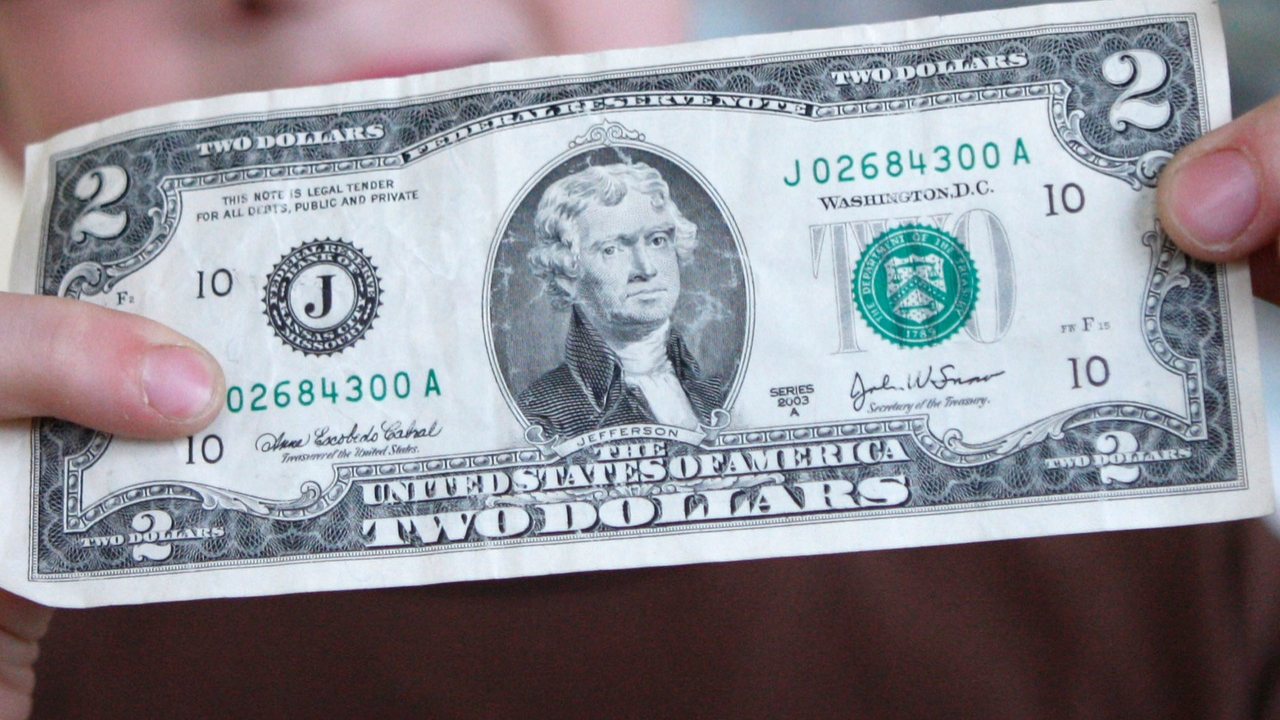$2 Bill Worth Millions in 2025: In a surprising twist, a gas station worker in rural Georgia found a rare $2 bill that turned out to be worth an incredible $12 million. This amazing discovery has sparked excitement among coin and currency collectors, proving that hidden treasures can still be found in everyday transactions. If you’re curious about this extraordinary find, this guide explains the story, what makes the bill so valuable, and how you can check your own money for rare gems.
The Incredible Discovery
In July 2025, Luis Ramirez, a 37-year-old gas station worker in rural Georgia, was counting cash during a busy morning shift. Among the bills, he noticed a $2 bill that looked different—it had a unique texture and an unusual serial number. Instead of dismissing it, Luis set it aside and researched it after his shift. His curiosity led to a life-changing moment when he learned the bill was a rare 1890 Treasury Note, nicknamed the “Grand watermelon” for its large green zeros on the back.
How It Happened
Luis uploaded a photo of the bill to online currency forums, where collectors quickly recognized its value. Experts confirmed it was an 1890 series $2 bill with a red seal and a rare misprint, one of only a few known to exist in mint condition. After authentication, the bill was appraised at $12 million, making it one of the most valuable $2 bills ever found.
Why Is This $2 Bill So Valuable?
Not all $2 bills are worth millions, but certain features make some extremely rare. Here’s what made Luis’s find special:
- Age: Printed in 1890, it’s over 130 years old, from an era when $2 bills were less common.
- Red Seal: Older $2 bills with red seals (instead of modern green ones) are highly collectible.
- Misprint: A rare printing error, like misaligned ink or numbers, increases value.
- Condition: The bill was in near-perfect, uncirculated condition, with no folds or tears.
- Rarity: Only a handful of these 1890 “Grand watermelon” notes survive today.
Other Valuable $2 Bill Features
Collectors look for specific traits that boost a bill’s worth. Here’s a quick guide:
| Feature | Description | Potential Value Increase |
|---|---|---|
| Issue Year | Pre-1928, especially 1800s | $100–$12M+ |
| Serial Number | Low numbers (e.g., 00000001) or patterns | $50–$500,000+ |
| Seal Color | Red or brown seals (not green) | $50–$10,000+ |
| Printing Errors | Misalignments, ink smudges | $500–$90,000+ |
| Condition | Crisp, uncirculated | Up to 10x circulated |
How to Spot a Valuable $2 Bill
You don’t need to be an expert to find a rare bill. Follow these steps to check your $2 bills:
- Look at the Year: Bills from before 1928, especially the 1800s, are more likely to be valuable.
- Check the Seal: Red or brown seals indicate older, collectible notes.
- Examine the Serial Number: Look for low numbers (e.g., 00000001), repeating patterns, or stars.
- Inspect for Errors: Misprints like off-center text or blurred ink can add value.
- Assess Condition: Uncirculated bills (no creases or wear) are worth more.
- Get It Appraised: Contact a professional grading service like PCGS or PMG for an expert opinion.
Store bills in acid-free sleeves, avoid folding, and handle them minimally to preserve value.
Why $2 Bills Are Special
$2 bills are uncommon in daily use, making them feel rare. The U.S. Treasury still prints them, but they’re not widely circulated, often saved as keepsakes or used for tips. Older versions, especially from the 1800s or early 1900s, can be worth thousands or even millions due to their scarcity and historical value. Stories like Luis’s have inspired people to check their wallets, old drawers, or family collections for hidden treasures.
The Rise of Currency Collecting
This discovery has sparked a wave of interest in numismatics (the hobby of collecting coins and bills). Social media is buzzing with people sharing photos of their $2 bills, hoping to find a rare one. While most $2 bills are worth their face value, unique features like errors or low serial numbers can make them collector’s gems.
Where to Sell or Appraise Your $2 Bill
If you think you have a valuable $2 bill, here’s what to do:
- Professional Grading: Services like PCGS or NGC can authenticate and grade your bill.
- Coin Shops: Local dealers can offer quick appraisals or buy directly.
- Online Marketplaces: eBay or Heritage Auctions are popular for selling rare currency.
- Collector Forums: Websites like Reddit’s r/papermoney connect you with experts and buyers.
Always get multiple opinions to ensure you’re getting a fair price.
Conclusion
Luis Ramirez’s discovery of a $12 million $2 bill at a Georgia gas station shows that treasures can hide in plain sight. This rare 1890 “Grand watermelon” note, with its red seal and misprint, turned an ordinary day into a life-changing moment. Whether you’re a collector or just someone with spare change, check your $2 bills for rare features like old dates, red seals, or errors. You might not find a $12 million bill, but even smaller finds can be worth hundreds or thousands. Start your treasure hunt today!
FAQ
How much is a $2 bill worth?
Most $2 bills are worth $2, but rare ones from the 1800s, with red seals, low serial numbers, or errors, can be worth $50 to millions.
What made the gas station $2 bill so valuable?
It was an 1890 Treasury Note with a red seal, a rare misprint, and near-perfect condition, one of only a few known to exist.
Are $2 bills still printed?
Yes, the U.S. Treasury still prints $2 bills, but they’re uncommon in daily use, often saved as keepsakes.
How can I check if my $2 bill is rare?
Look for pre-1928 dates, red seals, low or unique serial numbers, or printing errors. Get it appraised by PCGS or NGC.
Where can I sell a rare $2 bill?
Try coin shops, online platforms like eBay or Heritage Auctions, or collector forums like Reddit’s r/papermoney.
Can I still find rare $2 bills in circulation?
Yes, rare bills can appear in change, old wallets, or family collections. Always check for unique features before spending.



